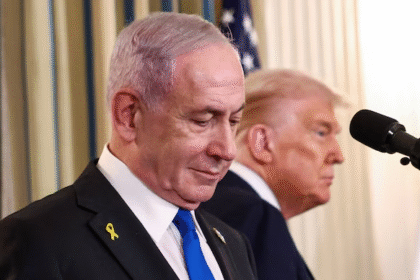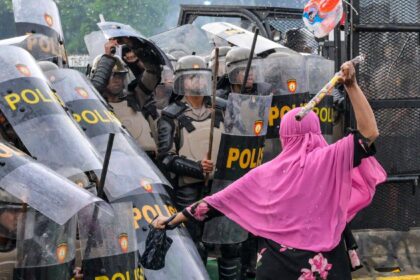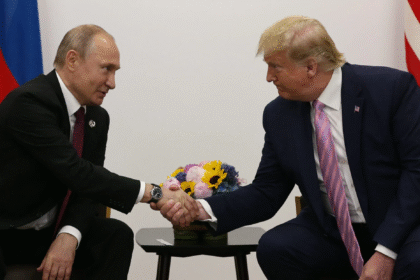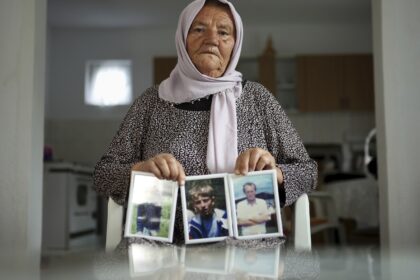Where the Iran-Israel-US Ceasefire Stands: Key Developments Explained
New Delhi: After 12 days of escalating conflict between Iran and Israel, and direct US involvement in the final stretch, a fragile ceasefire has taken hold, leaving behind few certainties and many unresolved questions.
The Israeli air campaign against Iran, Operation Rising Lion, was launched on June 13 to remove what Israel claimed were “existential threats” referring to Iran’s nuclear and ballistic missile programmes.
Going beyond this stated objective, Netanyahu said that he would also bring about regime change in Iran. He said that the Irani government was “very weak” and that “80% of the people would throw these theological thugs out” if given the chance.
Iran, its military capacity already diminished by two earlier rounds of strikes in April and October 2024, insisted it was acting only in response. The United States maintained that its aim was to prevent Iran from acquiring a nuclear weapon.
While the dust is yet to settle, The Wire examines how each of the key actors – Washington, Tehran, and Tel Aviv – fared in the conflict, and what comes next.
Where the US stands: Uncertain gains and the uranium question
One of the key difficulties in assessing the situation is the lack of clarity around Washington’s actual objective. Operation Midnight Hammer was launched on June 22 with the stated goal of preventing Iran from acquiring nuclear weapons, dropping 75 precision munitions, including 14 ‘bunker buster’ bombs over the nuclear facilities at Fordo, Natanz and Isfahan.
The unprecedented strike, greenlighted by a president who had pledged to end American entanglements overseas, also came just three months after Director of National Intelligence Tulsi Gabbard told Congress that Iran was not actively building nuclear weapons. After the strikes, Trump twice ridiculed that assessment, prompting Gabbard to later claim that her remarks had been “taken out of context”.
On Sunday, senior Trump administration officials, including vice-president J.D. Vance and secretary of defence Pete Hegseth, made assurances that they were not seeking regime change. The US was “not at war with Iran, we’re at war with Iran’s nuclear programme”, said Vance. This suspicion had been fostered because the Israeli prime minister had talked publicly and stated a regime change as a key goal.
However, Vance and Hegseth’s message was swiftly undercut by Trump’s posts on Truth Social, where he openly floated the idea of regime change. His sudden announcement of a ceasefire seemed to mark another swing-back of the pendulum, especially as he appeared to equate Israel and Iran in his framing of the conflict.
If halting Iran’s nuclear ambitions was the intended goal, it is not yet clear whether it has been achieved or was ever realistically achievable.
Satellite imagery shows significant damage to the targeted underground nuclear sites, but it is not yet certain they were “obliterated.”
A CNN report citing an early US intelligence assessment said that the strikes did not destroy the core components of the country’s nuclear programme and “likely only set it back by months.” In a post on Truth Social, Trump disputed this report.
Much depends on the fate of 400 kilograms of Iran’s highly enriched military-grade uranium, which is enough for multiple warheads and compact enough to fit in the back of 10 cars. The location of that stockpile, possibly moved before the strikes, now determines whether Washington can credibly claim to have crippled Iran’s nuclear programme.
Where Iran stands: A battered regime, still in control
Iran suffered heavily in the early stages of the conflict, particularly on the first day of Israeli air strikes, which killed senior military leaders and nuclear scientists and severely damaged its air defences. The Israelis and US boasted of air domination over Iran.
But, it managed to retaliate over the next 12 days, although its capacity appears to have been significantly reduced. At the outset, Iran was believed to possess around 2,000 ballistic missiles. By Israel’s count, Iran fired 500 missiles, resulting in 28 deaths.
With Trump hinting that Iran’s Supreme Leader could be a target, questions were raised about the regime’s survivability. But most analysts agreed that the regime’s unpopularity was not decisive, given the absence of any credible alternative political force.
Expectations of a regime collapse in Tel Aviv and parts of Washington proved illusory, yet again. As expected, the attacks triggered a rally-around-the-flag effect. At the same time, many long traffic jams emerged as Iranians fled urban centres for safer areas, and the economic strain was increasingly visible.
Since the start of the Gaza war, Iran’s regional influence has eroded. Israel systematically targeted Tehran-aligned groups like Hezbollah, has also penetrated deep into Iranian institutions, enabling operations like the assassination of the Hamas chief in Tehran. With the Assad regime in Syria now defunct, the Houthis are perhaps the only Iran-backed proxy still functioning with any real effectiveness.
On the Arab street, it earned a degree of respect for standing up to both Israel and the United States, despite being militarily outmatched. Arab governments condemned Iran’s attacks in response to Israeli strikes, though they were noticeably more restrained when it came to criticising the June 23 US strikes. Turkey and Saudi Arabia expressed only concern, while United Arab Emirates and Qatar condemned, but didn’t mention the US by name.
With Russia and China offering little more than rhetorical support, Iran found itself increasingly isolated.
In the end, the Iranian government weathered the crisis, agreeing to halt hostilities after launching a choreographed missile strike on a US air base in Qatar, a move intended more as a face-saving gesture than genuine escalation. Tehran is likely to continue avoiding direct confrontation with the United States, which it views as posing a far greater threat to regime survival. In contrast, it has fewer inhibitions about targeting Israel, even though it sees Israeli and US actions as indistinguishable. This ceasefire buys time, not peace.
In this context, Iran is expected to hold tightly to its stockpile of 60 percent highly enriched uranium – not only as leverage in any future nuclear negotiations with the West, but also as a symbol of resilience and continuity for its domestic audience.
Where Israel stands: Netanyahu’s war dividend
The military superiority of Israel was never in doubt when Tel Aviv began striking Iran. It had already been demonstrated in several exchanges over the last one year.
The June 13 attacks targeted Iran’s Natanz Fuel Enrichment Plant and four buildings at the Esfahan nuclear site. Two days later, Israel claimed it had struck “more than 80” targets in Tehran, among them the Iranian defence ministry headquarters, infrastructure linked to the “nuclear weapons project,” fuel tankers, and other installations.
By June 18, the International Atomic Energy Agency (IAEA) reported that two centrifuge production facilities – the TESA Karaj workshop and the Tehran Research Center – had been hit. Both had been under IAEA monitoring under the Joint Comprehensive Plan of Action (JCPOA). On June 19, the Khondab Heavy Water Research Reactor, still under construction, was also struck. Two days later, Israel hit another centrifuge manufacturing workshop in Esfahan. Other targets included police headquarters, the Islamic Revolutionary Guard Corps intelligence directorate, and Iran’s state broadcaster.
Iran’s health ministry said that 500 people have been killed since the strikes began. A human rights group in Iran, however, has put the death toll at 950.
Iran has confirmed the deaths of six of its top nuclear scientists in the strikes. At least 20 Iranian military commanders were also killed, including chief of staff of Iran’s armed forces, Maj Gen Mohammad Bagheri, and the commander of the Islamic Revolutionary Guard Corps (IRGC), Gen. Hossein Salami.
At the start of the offensive, prime minister Benjamin Netanyahu set out two goals – to degrade Iran’s nuclear and ballistic missile program, and, implicitly, strike a decisive blow against the regime in Tehran. Neither objective has been definitively achieved, but it has not stopped Netanyahu from declaring victory.
Undoubtedly, the biggest achievement for the Israeli government was persuading Washington to carry out direct strikes on Iran. It marked a political resurrection for Israel’s longest-serving prime minister, who had faced intense domestic criticism over the October 7 Hamas attack, widely regarded as the country’s most serious intelligence failure.
For decades, he had been claiming that Iran was just weeks aways from making nuclear weapons and advocating for large-scale attacks, but had been greeted with scepticism from western capitals. That changed during Donald Trump’s second term. One of the earliest signs of a more receptive audience was the shift in US’ negotiating demands in talks with Iran, from limiting enrichment at specific facilities to insisting on zero enrichment altogether.
With Tehran balking, negotiations ground to a halt, which frustrated Trump who became increasingly open to the arguments of anti-Iran interventionists within his circle.
At home, the attacks helped Netanyahu weaken opposition to his government. Several opposition leaders praised the strikes, temporarily blunting their criticism of his leadership. There is now growing speculation that Netanyahu may call early elections, despite the current term running until 2026.
The unresolved question is Gaza. Talks with Hamas on securing the release of remaining hostages and reaching a permanent ceasefire remain on the table. Analysts suggest that Netanyahu, buoyed by rising poll numbers, may feel less beholden to his far-right allies and could be more willing to strike a deal. Still, with many variables at play, it is unclear whether this moment of political advantage will last.
Also Read: Volcano Horror: 31-Year-Old Brazilian Tourist Falls 250 Meters to Death on Indonesia’s Mount Batur








